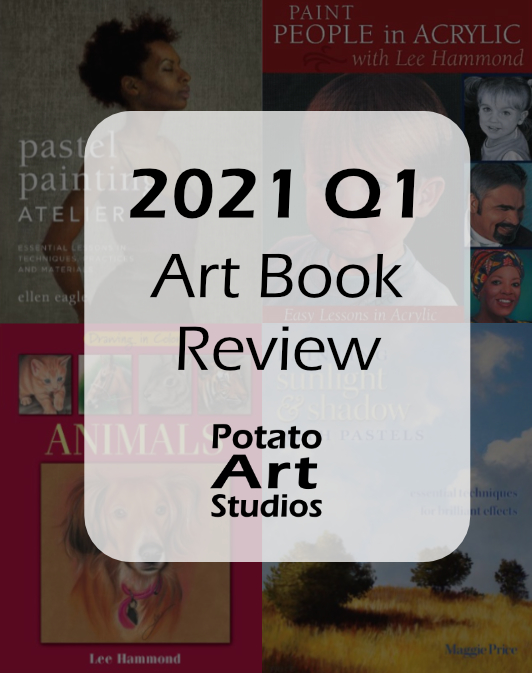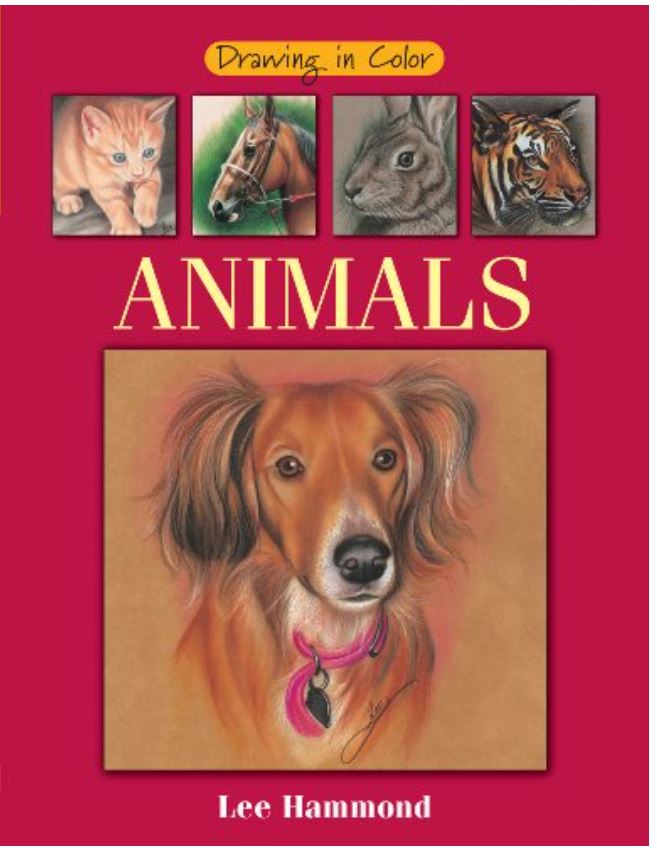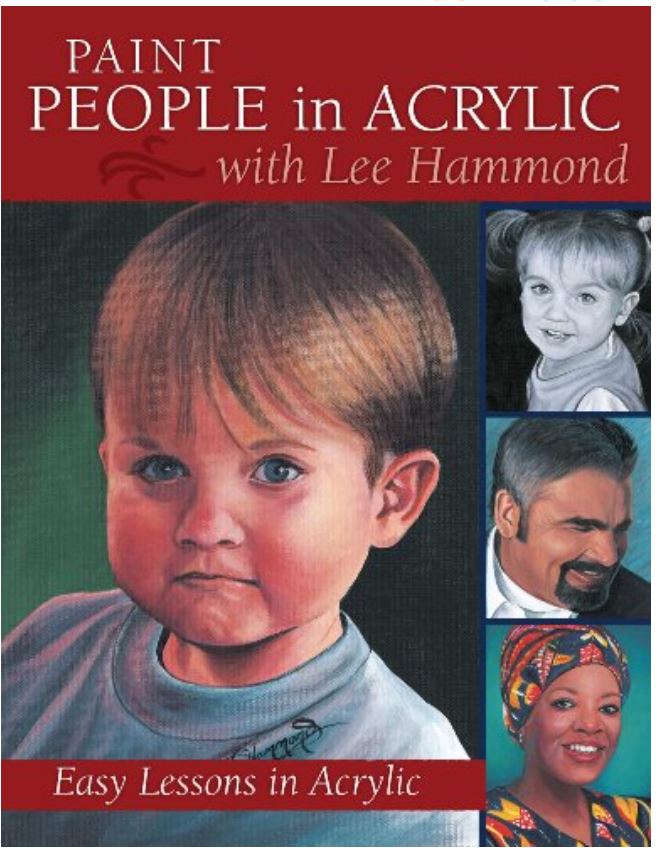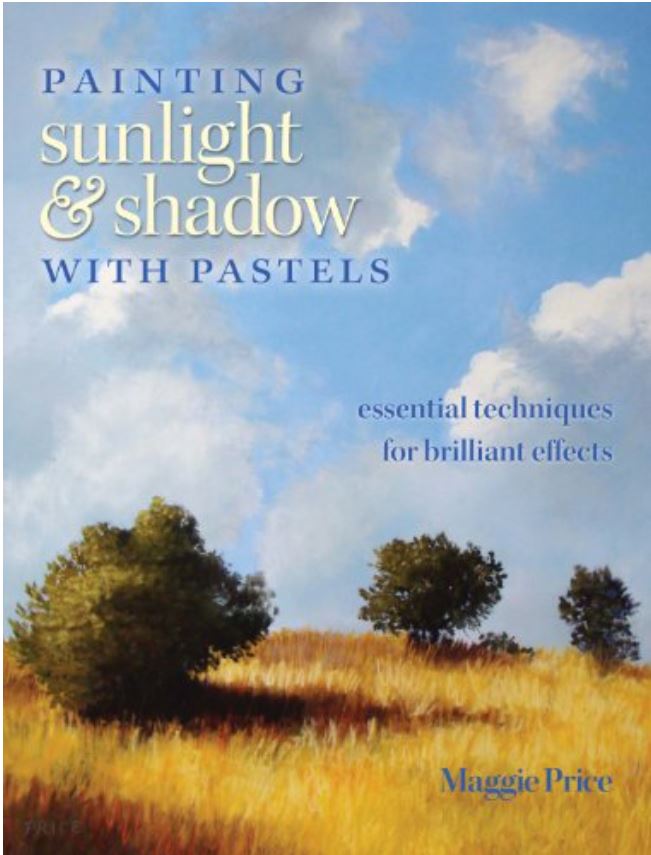
In 2021 one of my new year’s resolutions was to read more art books. I gave myself the flexibility to read anything from an artist’s bibliography to art history and tutorials. With my current interest in pastels, the first thing I did was look through the catalog available through my local library. If you’re curious about my 2021 resolutions, I’ve linked my January blog post here:
So far, I’ve read two books and skimmed through two shorter books. It’s been well over a decade since I last read a “tutorial-style” art book and several years since I last stepped in a classroom. I found my first quarter book selections had a wide range in quality.
Books can never replace face-to-face instruction with a great art teacher, but they can be sources of inspiration or useful references. If a book fails to teach me anything new, I won’t hide the fact that I found little value in its reading. My ratings are based on a traditional scale of 1-5 stars. Books assigned a one star rating I feel are not helpful or useful for most artists. Three star books are average. And five star books are highly recommended.
As an Amazon Associate, I earn a small commission from qualifying purchases. Product links may include affiliate links. If you choose to use an affiliate link to shop for art supplies, your support helps keep this site ad-free!

Title: Pastel Painting Atelier
Author: Ellen Eagle
Rating: 3 out of 5 stars
Quick review: Good for light reading, 20% instruction, 80% artist musings.
Where to buy: Amazon digital edition ($7.99 USD), Hardcover ($25.75 USD)
Ellen is a pastel portrait artist and I was immediately interested in her work from the first few examples of her book. She works from life and often paints people that she’s known for a long time. Much of her book covers how her relationships and life impact how she chooses the colors and poses for her models. It’s not a technique-heavy nor a step-by-step guide, but she shares a lot of her artistic decisions and changes through the last half of the book. I enjoyed seeing the subtle revisions through the preliminary charcoal sketch, underpainting, and finishing details.
This book already assumes that you are familiar with pastels and are looking to draw portraiture with hard and firm pastels on sanded surfaces. I am not familiar with both the medium and the surface (and don’t have a strong desire to suddenly switch). But I did enjoy learning how another artist thinks and the flexibility you have to change to improve your composition and color choices. I would recommend this as a light read for artists of all mediums if you have an interest in getting into the mind of another artist.

Title: Drawing in Color – Animals
Author: Lee Hammond
Rating: 1 out of 5 stars (would not recommend to most artists)
Quick review: Basic drawing fundamentals in early chapters. Does not include specific drawing techniques to teach textures (fur, hair, scales, etc.).
Where to buy: Amazon digital edition ($9.99 USD), paperback ($7.72 USD)
I skimmed through two of Lee Hammond’s books. Hammond is a prolific “tutorial-style” book writer so I went in knowing that they would be quick reads. I was honestly overwhelmingly disappointed by the quality of Hammond’s books. If you have already taken a few introductory art classes in middle school or high school, Lee’s books will not teach you anything new. If it has been years since you last picked up a pencil or paintbrush, Hammonds writing may be a good way to refresh on the basics. However I would recommend seeing if your library carries the books before you purchase a physical copy for yourself.
If you have never taken an art class, some of the topics covered in the early chapters of Drawing in Color – Animals may be beneficial with light and shading. But I found the majority of the book focused on simplifying animals and did not put any emphasis on the unique qualities of the range of animals that she attempted to cover. I think the book may have been too ambitious trying to teach the audience how to draw nearly every animal at a zoo. The end result was unfortunately a shallow book with quick sketches of random animal body parts, yet very little explanation on how to draw an entire animal from start to finish. If I was given this book as a teenager, I would have been frustrated at the lack of instruction and oversimplification of complex animals.

Title: Paint People in Acrylic
Author: Lee Hammond
Rating: 1 out of 5 stars (would not recommend to most artists)
Quick review: a beginner’s guide to painting people without covering anatomy
Where to buy: Amazon digital edition ($12.99 USD), paperback ($21.34 USD)
I kept pushing through and read the entirety of Paint People in Acrylic for advice on color mixing (which was the specific area I was hoping she would cover based on the title). Every portrait example was a reiteration of the basic principles and a redundant rephrasing of paint, blend, paint more, blend more. If you’re interested in learning anatomy, her books do not cover the topic at all. The only instruction about the drawing aspect of portraits is using the grid method to transfer the outlines of profiles. There is no mention of understanding bone or muscle structures.

Title: Painting Sunlight and Shadow with Pastels : Essential Techniques for Brilliant Effects
Author: Maggie Price
Rating: 5 of 5 stars (recommended for intermediate and advanced artists)
Quick review: Step-by-step landscape pastel tutorials focused on value and color choices.
Where to buy: Amazon digital edition ($8.99 USD), paperback ($28.48 USD)
Of the first quarter’s readings, Price’s book was the goldilocks of what I was looking for in a book. It contains many examples of landscapes drawn with an emphasis to explain color choices. I have been searching for a good color theory book for several years and this book just started to scratch the itch I needed.
What makes Painting Sunlight and Shadow with Pastels unique is that it contains just enough intermediate steps to let you learn without burdening you with overly wordy explanations. While Hammond’s book had the opposite effect of oversimplification, Price points out just the essential parts of each step which makes each lesson digestible. The examples in the drawing tutorials are also very varied in the color palettes and compositions so it doesn’t feel like you’re repeating the same tutorial at the end of each chapter.
The artwork she features are from accomplished pastel artists and she pinpoints the specific areas where color choices were successfully implemented. I found that I was frequently reaching for my notebook to jot down pieces of advice. I am seriously considering purchasing a copy of the book just to have a better look at the tutorials for my own reference.
After my first quarter of book reading, I think my experience reading from 3 very distinct artists can be summarized by the following:
- Utilize your public library first to see if there are books available in your areas of interest. You can always purchase the book new (or used) if you wish to add it to your personal art library.
- If you don’t like the artwork made by the artist writing the book, you’re probably not going to like the book. Most artists have a website where you can see a portfolio of their work.
- You don’t need to work in the same art material as the artist to find value in a book. Common concepts such as color theory are valuable across all art disciplines.
- You do not need to follow every lesson or apply every teaching to your own work. Pick and choose what information you feel will fit with your style and techniques.
- Read the book excerpt before purchasing a book. Book reviews are very subjective especially when it comes to art. Every artist has a different background and experience level.
- People will have different expectations on what they want out of an art book. My reviews are clearly biased based on if the book addressed the areas I was personally invested in learning.
Looking forward to another quarter of reading! I have two additional books already in mind for the spring. I’ll be checking in around late June/early July with the next round of art books.
If you’ve enjoyed an art book recently, share your latest read in the comments.
-Lauren
1 thought on “Art book review 2021 (Q1)”